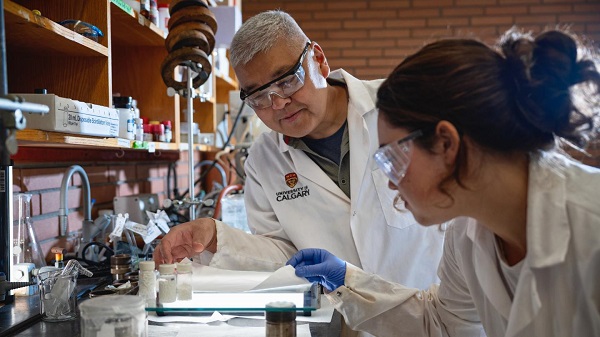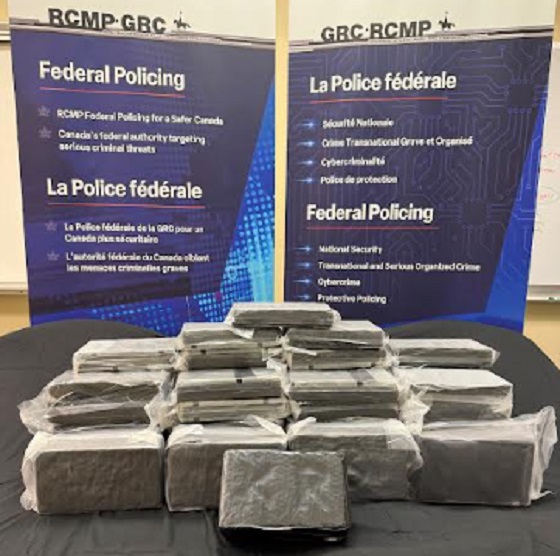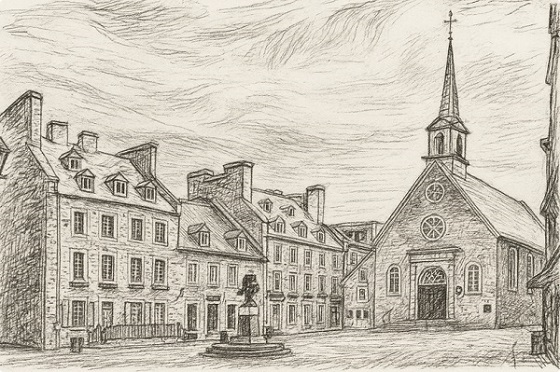Uncategorized
Notorious drug lord Joaquin “El Chapo” Guzman convicted
NEW YORK — Mexico’s most notorious drug lord, Joaquin “El Chapo” Guzman, was convicted Tuesday of running an industrial-scale smuggling operation after a three-month trial packed with Hollywood-style tales of grisly killings, political payoffs, cocaine hidden in jalapeno cans, jewel-encrusted guns and a naked escape with his mistress through a tunnel.
Guzman faced a drumbeat of drug-trafficking and conspiracy convictions that could put the 61-year-old escape artist behind bars for decades in a maximum-security U.S. prison selected to thwart another one of the breakouts that embarrassed his native country.
New York jurors whose identities were kept secret reached a verdict after deliberating six days in the expansive case, sorting through what authorities called an “avalanche” of evidence gathered since the late 1980s that Guzman and his murderous Sinaloa drug cartel made billions in profits by smuggling tons of cocaine, heroin, meth and marijuana into the U.S.
Evidence showed drugs poured into the U.S. through secret tunnels or hidden in tanker trucks, concealed in the undercarriage of passenger cars and packed in rail cars passing through legitimate points of entry — suggesting that a border wall wouldn’t be much of a worry.
The prosecution’s case against Guzman, a roughly 5
One Sinaloa insider described Mexican workers getting contact highs while packing cocaine into thousands of jalapeno cans — shipments that
The
Deliberations were complicated by the trial’s vast scope. Jurors were tasked with making 53 decisions about whether prosecutors have proven different elements of the case.
The trial cast a harsh glare on the corruption that allowed the cartel to flourish. Colombian trafficker Alex Cifuentes caused a stir by testifying that former Mexican President Enrique Peña Nieto took a $100 million bribe from Guzman. Peña Nieto denied it, but the allegation fit a theme: politicians, army commanders, police and prosecutors, all on the take.
The tension at times was cut by some of the trial’s sideshows, such as the sight of Guzman and his wife, Emma Coronel Aispuro, showing up in matching burgundy velvet blazers in a gesture of solidarity. Another day, a Chapo-size actor who played the kingpin in the TV series “Narcos: Mexico” came to watch, telling reporters that seeing the defendant flash him a smile was “surreal.”
While the trial was dominated by Guzman’s persona as a near-mythical outlaw who carried a diamond-encrusted handgun and stayed one step ahead of the law, the jury never heard from Guzman himself, except when he told the judge he wouldn’t testify.
But his sing-songy voice filled the courtroom, thanks to recordings of intercepted phone calls. “Amigo!” he said to a cartel distributor in Chicago. “Here at your service.”
One of the trial’s most memorable tales came from girlfriend Lucero Guadalupe Sanchez Lopez, who testified she was in bed in a safe house with an on-the-run Guzman in 2014 when Mexican marines started breaking down his door. She said Guzman led her to a trap door beneath a bathtub that opened up to a tunnel that allowed them to escape.
Asked what he was wearing, she replied: “He was naked. He took off running. He left us behind.”
The defendant had previously escaped from jail by hiding in a laundry bin in 2001. He then got an escort from crooked police officers into Mexico City before retreating to one of his many mountainside hideaways. In 2014, he pulled off another jail break, escaping through a mile-long lighted tunnel on a motorcycle on rails.
Even when Guzman was recaptured in 2016 before his extradition to the United States, he was plotting another escape, prosecutor Andrea Goldbarg said in closing arguments.
“Why? Because he is guilty and he never wanted to be in a position where he would have to answer for his crimes,” she told the jury. “He wanted to avoid sitting right there. In front of you.”
The Associated Press
Uncategorized
Trump Admin Establishing Council To Make Buildings Beautiful Again


From the Daily Caller News Foundation
By Jason Hopkins
The Trump administration is creating a first-of-its-kind task force aimed at ushering in a new “Golden Age” of beautiful infrastructure across the U.S.
The Department of Transportation (DOT) will announce the establishment of the Beautifying Transportation Infrastructure Council (BTIC) on Thursday, the Daily Caller News Foundation exclusively learned. The BTIC seeks to advise Transportation Secretary Sean Duffy on design and policy ideas for key infrastructure projects, including highways, bridges and transit hubs.
“What happened to our country’s proud tradition of building great, big, beautiful things?” Duffy said in a statement shared with the DCNF. “It’s time the design for America’s latest infrastructure projects reflects our nation’s strength, pride, and promise.”
“We’re engaging the best and brightest minds in architectural design and engineering to make beautiful structures that move you and bring about a new Golden Age of Transportation,” Duffy continued.
Mini scoop – here is the DOT’s rollout of its Beautifying Transportation Infrastructure Council, which will be tasked with making our buildings beautiful again. pic.twitter.com/
9iV2xSxdJM — Jason Hopkins (@jasonhopkinsdc) October 23, 2025
The DOT is encouraging nominations of the country’s best architects, urban planners, artists and others to serve on the council, according to the department. While ensuring that efficiency and safety remain a top priority, the BTIC will provide guidance on projects that “enhance” public areas and develop aesthetic performance metrics.
The new council aligns with an executive order signed by President Donald Trump in August 2025 regarding infrastructure. The “Making Federal Architecture Beautiful Again” order calls for federal public buildings in the country to “respect regional architectural heritage” and aims to prevent federal construction projects from using modernist and brutalist architecture styles, instead returning to a classical style.
“The Founders, in line with great societies before them, attached great importance to Federal civic architecture,” Trump’s order stated. “They wanted America’s public buildings to inspire the American people and encourage civic virtue.”
“President George Washington and Secretary of State Thomas Jefferson consciously modeled the most important buildings in Washington, D.C., on the classical architecture of ancient Athens and Rome,” the order continued. “Because of their proven ability to meet these requirements, classical and traditional architecture are preferred modes of architectural design.”
The DOT invested millions in major infrastructure projects since Trump’s return to the White House. Duffy announced in August a $43 million transformation initiative of the New York Penn Station in New York City and in September unveiledmajor progress in the rehabilitation and modernization of Washington Union Station in Washington, D.C.
The BTIC will comprise up to 11 members who will serve two-year terms, with the chance to be reappointed, according to the DOT. The task force will meet biannually. The deadline for nominations will end Nov. 21.
Uncategorized
New report warns WHO health rules erode Canada’s democracy and Charter rights

The Justice Centre for Constitutional Freedoms has released a new report titled Canada’s Surrender of Sovereignty: New WHO health regulations undermine Canadian democracy and Charter freedoms. Authored by Nigel Hannaford, a veteran journalist and researcher, the report warns that Canada’s acceptance of the World Health Organization’s (WHO) revised International Health Regulations (IHR) represents a serious erosion of national independence and democratic accountability.
The IHR amendments, which took effect on September 19, 2025, authorize the WHO Director-General to declare global “health emergencies” that could require Canada to follow directives from bureaucrats in Geneva, bypassing the House of Commons and the will of Canadian voters.
The WHO regards these regulations as “binding,” despite having no ability or legal authority to impose such regulations. Even so, Canada is opting to accept the regulations as binding.
By accepting the WHO’s revised IHR, the report explains, Canada has relinquished its own control over future health crises and instead has agreed to let the WHO determine when a “pandemic emergency” exists and what Canada must do to respond to it, after which Canada must report back to the WHO.
In fact, under these International Health Regulations, the WHO could demand countries like Canada impose stringent freedom-violating health policies, such as lockdowns, vaccine mandates, or travel restrictions without debate, evidence review, or public accountability, the report explains.
Once the WHO declares a “Pandemic Emergency,” member states are obligated to implement such emergency measures “without delay” for a minimum of three months.
Importantly, following these WHO directives would undermine government accountability as politicians may hide behind international “commitments” to justify their actions as “simply following international rules,” the report warns.
Canada should instead withdraw from the revised IHR, following the example of countries like Germany, Austria, Italy, Czech Republic, and the United States. The report recommends continued international cooperation without surrendering control over domestic health policies.
Constitutional lawyer Allison Pejovic said, “[b]y treating WHO edicts as binding, the federal government has effectively placed Canadian sovereignty on loan to an unelected international body.”
“Such directives, if enforced, would likely violate Canadians’ Charter rights and freedoms,” she added.
Mr. Hannaford agreed, saying, “Canada’s health policies must be made in Canada. No free and democratic nation should outsource its emergency powers to unelected bureaucrats in Geneva.”
The Justice Centre urges Canadians to contact their Members of Parliament and demand they support withdrawing from the revised IHR to restore Canadian sovereignty and reject blind compliance with WHO directives.
-

 Alberta6 hours ago
Alberta6 hours agoFrom Underdog to Top Broodmare
-

 International17 hours ago
International17 hours agoPrince Andrew banished from the British monarchy
-

 Alberta2 days ago
Alberta2 days agoNobel Prize nods to Alberta innovation in carbon capture
-

 Business1 day ago
Business1 day agoCanada’s attack on religious charities makes no fiscal sense
-

 Business17 hours ago
Business17 hours ago“We have a deal”: Trump, Xi strike breakthrough on trade and fentanyl
-

 Bruce Dowbiggin1 day ago
Bruce Dowbiggin1 day agoGet Ready: Your House May Not Be Yours Much Longer
-

 Crime16 hours ago
Crime16 hours agoCanada Seizes 4,300 Litres of Chinese Drug Precursors Amid Trump’s Tariff Pressure Over Fentanyl Flows
-

 National2 days ago
National2 days agoCanadian MPs order ethics investigation into Mark Carney’s corporate interests








